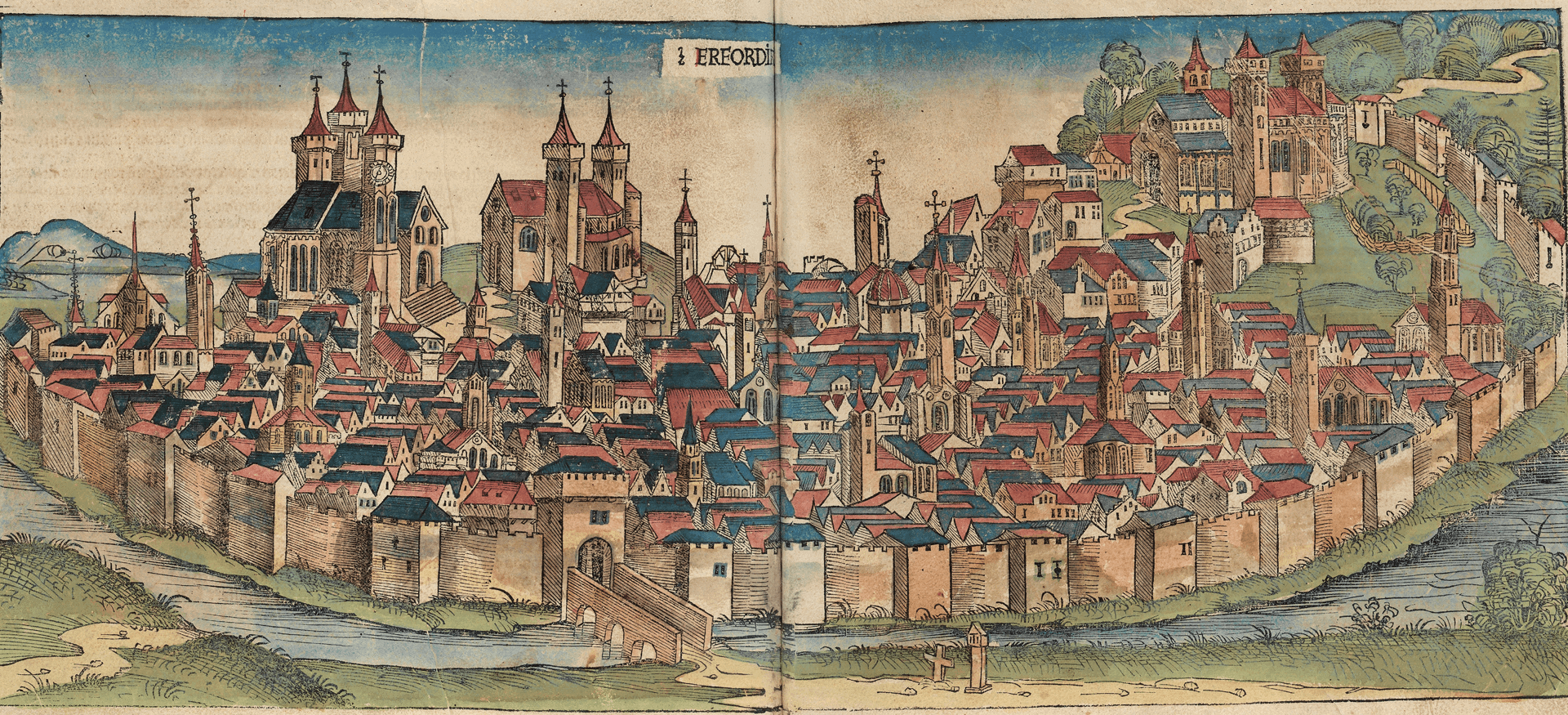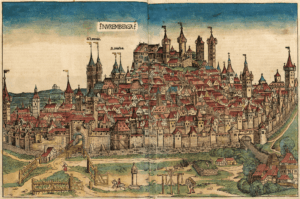The Nuremberg Chronicle printed on ARCHES® paper
The Nuremberg Chronicle is a book that was published in Germany in 1493. Written in Latin, but with a German translation, it is one of the best-documented, best-preserved incunables, and one of the first to have integrated text and illustrations in an aesthetic way.
The book, which contains 1,809 images produced from 645 different woodcut blocks, tells one version among many others of the history of the world, starting with the Creation and then detailing the events that happened from the birth of Jesus Christ until the present day. It contains numerous illustrations depicting European cities including Nuremberg, which is the only woodcut printed over a double page, as well as the first printed map of Germany in history.
The Arches paper mill provided the paper for the famous incunable, which was illustrated by Dürer and published in 1493, in the earliest days of printing.
An incunable, from the Latin incunabulum (meaning a cradle) is a book printed in Europe before 1 January 1501. It is thought that today between 30,000 and 32,000 incunables are kept in museums and libraries around Europe, 18% of them in France.
After movable type for printing presses was invented by Gutenberg in about 1455, printed books spread through Europe very quickly. Printing shops were opened in capitals and other large cities.
The book continued to change, however, until it took on its modern form in about 1520.






